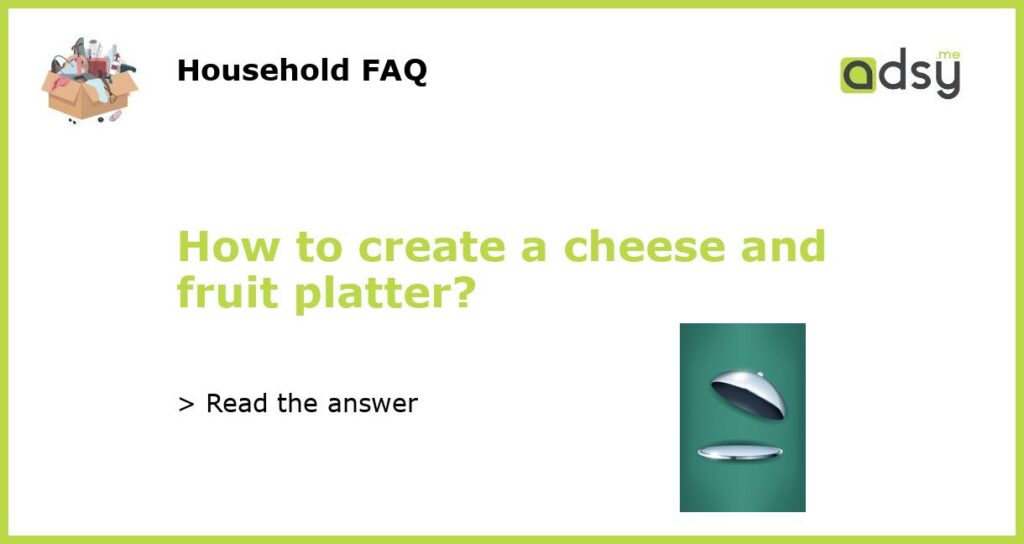Choose a variety of cheeses
When creating a cheese and fruit platter, it’s important to have a variety of cheeses that can cater to different tastes and preferences. Start by selecting a range of cheeses with different flavors, textures, and intensities. Popular options include brie, cheddar, gouda, blue cheese, and goat cheese.
Offering a mix of soft, semi-soft, and hard cheeses will ensure that there is something for everyone to enjoy. Be sure to include both mild and strong cheeses to provide a well-rounded selection.
Select a variety of fruits
In addition to cheese, an assortment of fresh fruits will complement the flavors and textures of the cheese on your platter. Choose fruits that are in season and are known to pair well with cheese.
Some popular fruits to include are grapes, apples, pears, berries, and figs. These fruits provide a balance of sweetness and acidity that can enhance the flavors of the cheese.
Slice the larger fruits into bite-sized pieces or arrange them whole on the platter. This will make it easier for guests to serve themselves and enjoy the fruits with the cheese.
Add accompaniments and condiments
To enhance the flavors of the cheese and fruit, it’s important to include accompaniments and condiments on your platter. This can include items such as crackers, bread, nuts, honey, and jams.
Choose a variety of crackers and breads that have different textures and flavors. This will provide options for guests to pair with their chosen cheeses.
Nuts such as almonds, walnuts, and pecans can add a crunchy texture to the platter. They also pair well with many types of cheese.
Honey and jams can add a touch of sweetness and offer a contrast to the salty and savory flavors of the cheese. Consider using honeycomb for a visually appealing and tasty addition.
Arrange the platter aesthetically
When it comes to creating a cheese and fruit platter, presentation is key. Arrange the cheeses, fruits, and accompaniments in an aesthetically pleasing manner that is inviting for guests.
Start by placing the cheeses on the platter, either by cutting them into slices or leaving them whole for guests to cut themselves. Create varying heights and shapes by stacking or overlapping the cheeses.
Next, strategically place the fruits around the cheeses. Mix colors and textures to create an eye-catching display.
Finally, add in the accompaniments and condiments, making sure they are easily accessible to guests. Consider placing small spoons or knives next to the honey and jams for easy serving.
Label the cheeses and offer pairing suggestions
To help guests navigate the cheese and fruit platter, it’s helpful to label the different cheeses and offer pairing suggestions. This can be done with small cards or labels placed next to each cheese.
Include the name of the cheese and a brief description of its flavor profile. Additionally, you can suggest certain fruits, accompaniments, or condiments that pair well with each cheese.
This will not only inform guests about the different options available but also encourage them to try new combinations and flavors.






